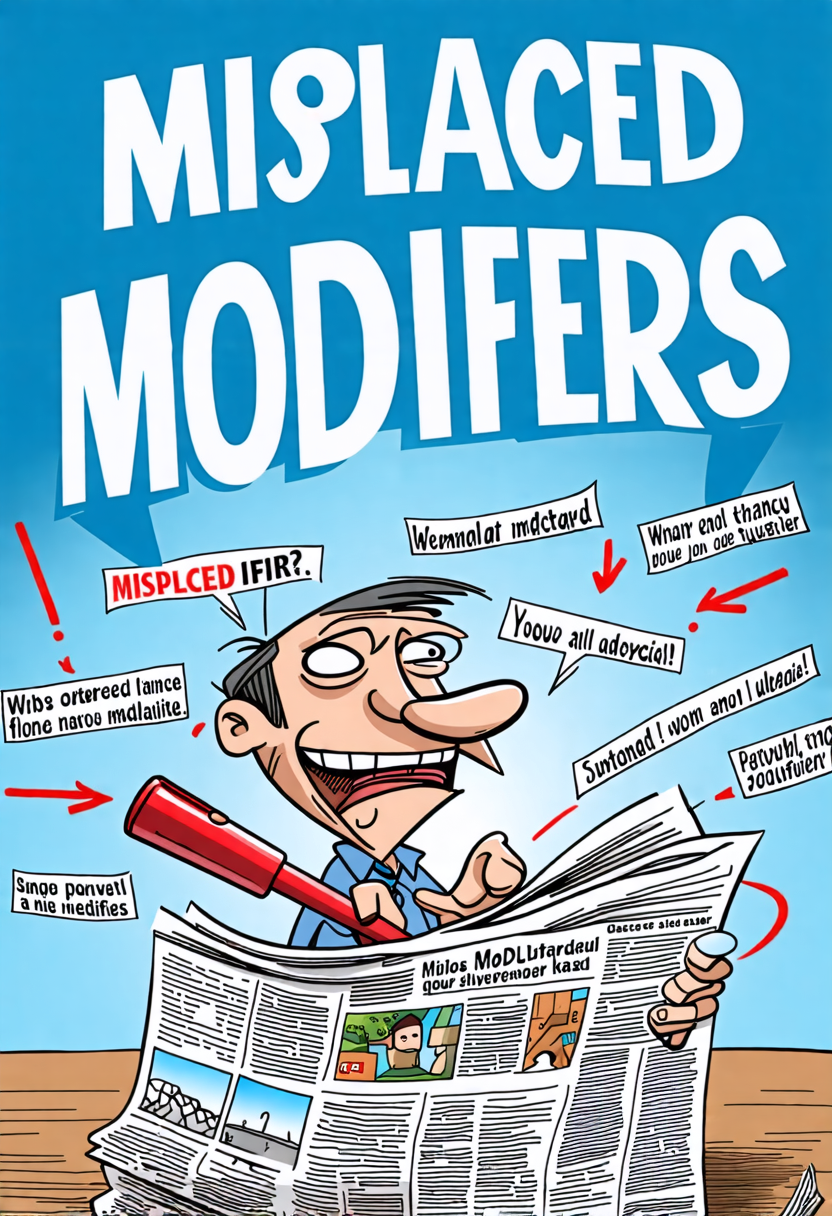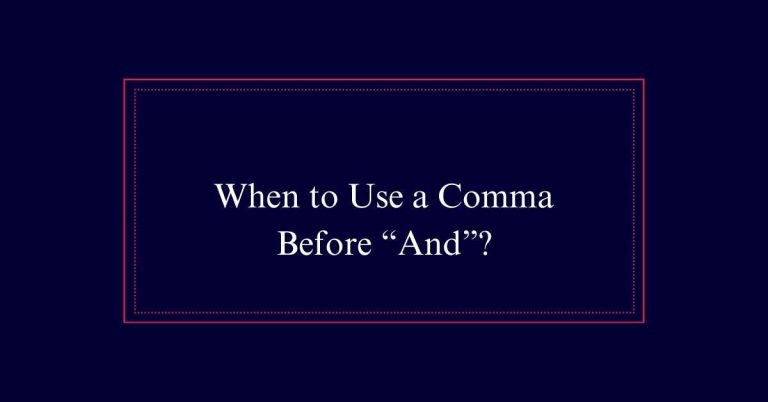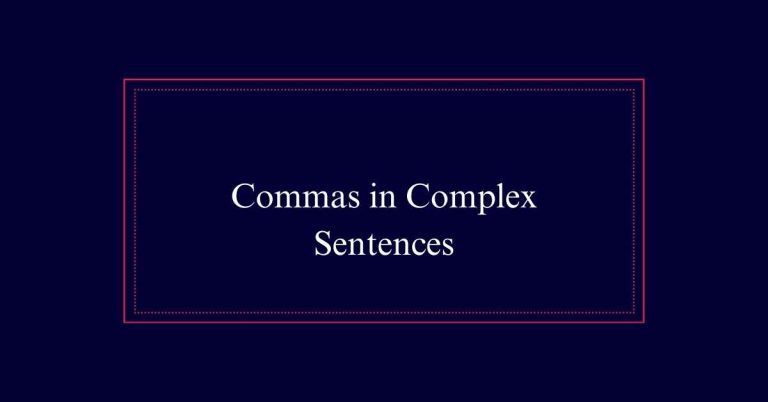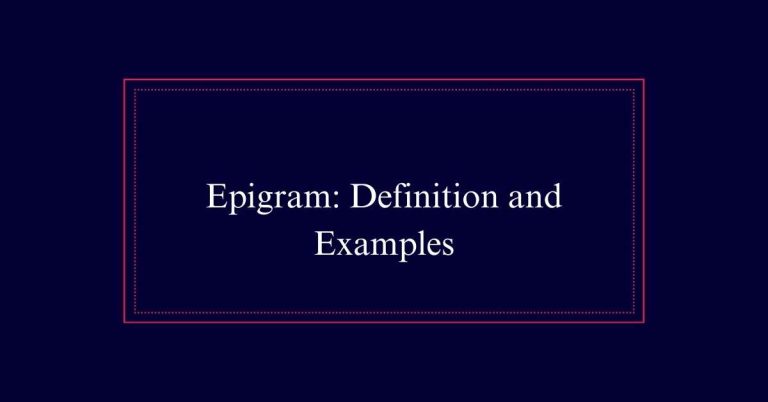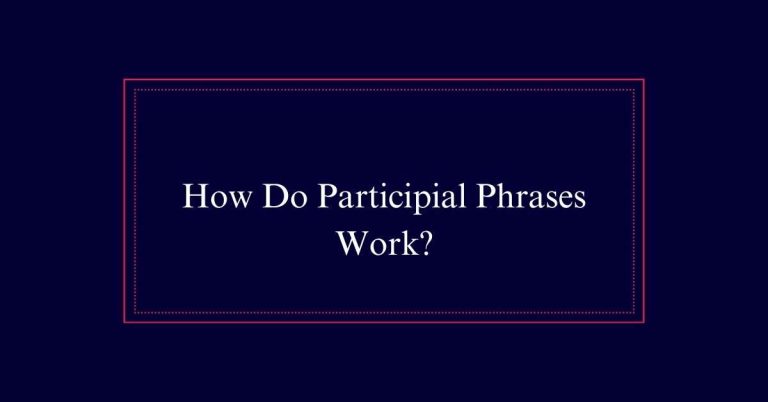Misplaced Modifiers
A misplaced modifier is a descriptive word, phrase, or clause placed incorrectly in a sentence, leading to confusion and ambiguity. These modifiers should be located next to the word they describe for clarity. Misplaced modifiers can obscure meaning and mislead readers.
For instance, in “She nearly drove her kids to school every day,” ‘nearly’ should modify ‘every day’ for clarity: “She drove her kids to school nearly every day.”
What Is a Misplaced Modifier?
A misplaced modifier is a descriptive word, phrase, or clause that is incorrectly separated from the word it modifies. This separation can make sentences unclear and create confusion.
Misplaced modifiers occur when adjectives, adverbs, prepositional phrases, or entire clauses are not placed next to the words they describe. For example, in the sentence ‘She almost drove her kids to school every day,’ the word ‘almost’ is a misplaced modifier.

It should be placed closer to the action it modifies, such as ‘She drove her kids to school almost every day.’ Fixing misplaced modifiers involves rearranging the sentence to place the modifier next to the correct word.
Types of Modifiers
Modifiers are essential elements in writing that describe or provide additional information about other words, improving clarity and detail. There are different types of modifiers, each serving a unique function.
Adjective modifiers describe nouns or pronouns, adding details like color or size. Adverb modifiers describe verbs, adjectives, or other adverbs, explaining how, when, where, or to what extent an action occurs.
Phrase modifiers consist of groups of words acting as a single unit to modify another word. Clause modifiers contain a subject and a verb, providing additional information within a sentence.
Effects of Misplaced Modifiers
Misplaced modifiers can greatly impact the clarity and meaning of a sentence. When modifiers are positioned incorrectly, they can create confusion and ambiguity.
For example, ‘She almost drove her kids to school every day‘ suggests she rarely drove them, while ‘She drove her kids to school almost every day’ clarifies the intended meaning.
Misplaced modifiers disrupt the logical flow, making sentences hard to understand. They can also unintentionally change the meaning, leading to misinterpretation. Clear writing requires that modifiers are placed next to the words they describe.
Misplaced Vs. Dangling Modifiers
Understanding the difference between misplaced and dangling modifiers is key to improving sentence clarity and coherence. A misplaced modifier is separated from the word it describes, leading to confusion. For example, ‘She almost drove her kids to school every day’ suggests she almost did it, but didn’t. Instead, it should be, ‘She drove her kids to school almost every day.’
On the other hand, a dangling modifier describes something not clearly stated in the sentence. For instance, ‘Running late, the meeting started without him’ incorrectly suggests the meeting was running late. It should be, ‘Running late, he missed the start of the meeting.’
Fixing Misplaced Modifiers
To fix a misplaced modifier, start by identifying the word it is meant to describe. Place the modifier next to this word for better clarity. Misplaced modifiers can obscure meaning and confuse readers. By rearranging words, you can enhance sentence structure and communication.
Here is a table illustrating examples:
| Misplaced Modifier | Corrected Sentence |
|---|---|
| He almost drove his kids to school every day. | He drove his kids to school almost every day. |
| The teacher said on Monday she would give a test. | The teacher said she would give a test on Monday. |
| Running quickly improves health. | Running improves health quickly. |
Adjective Modifiers
Correcting misplaced modifiers lays the foundation for understanding the importance of adjective modifiers in enhancing sentence clarity. Adjective modifiers provide essential information about nouns or pronouns, giving readers a clearer picture of the subject.
They must be placed directly next to the noun they describe to avoid ambiguity. For example, in the sentence ‘The red car zoomed past,’ ‘red’ is the adjective modifier that clarifies which car. If misplaced, the sentence could become confusing. An incorrect placement like ‘Zoomed past the red car’ changes the meaning entirely.
Adverb Modifiers
Adverb modifiers enhance sentences by providing details on how, when, where, or to what extent actions are performed. They modify verbs, adjectives, or other adverbs, making the action clearer.
Proper placement is key for comprehension. For example, in ‘She quickly finished her work,’ ‘quickly’ tells us how she finished. When misplaced, adverb modifiers can confuse readers. Compare ‘She almost drove her entire family’ with ‘She drove almost her entire family.’ The meaning changes dramatically.
To avoid confusion, place adverb modifiers close to the words they describe. This guarantees clarity and maintains the intended meaning. Correctly positioned, adverb modifiers improve the readability and precision of sentences.
Phrase Modifiers
Phrase modifiers, consisting of groups of words functioning as a single unit, play an essential role in enhancing sentence clarity. They modify nouns, verbs, adjectives, or adverbs and should be placed adjacent to the word they describe.
For instance, in the sentence ‘Running swiftly, the dog chased the ball,’ the phrase ‘running swiftly’ modifies the dog. Misplaced phrase modifiers can alter the intended meaning, leading to confusion.
For example, ‘The dog chased the ball running swiftly’ mistakenly implies the ball is running. Correct placement of phrase modifiers guarantees the sentence conveys the right message.
Clause Modifiers
Clause modifiers, containing a subject and a verb, add depth and detail to sentences by modifying nouns, pronouns, verbs, or adverbs. These modifiers function as complete thoughts within a sentence, providing additional information that enhances meaning.
Proper positioning is essential for clarity. For example, ‘The book that she recommended was fascinating’ has the clause modifier correctly placed to describe ‘book.’ If misplaced, such as in ‘The book was fascinating that she recommended,’ the sentence becomes confusing.
